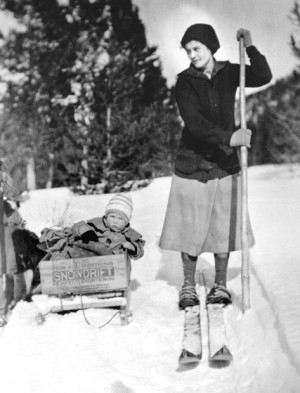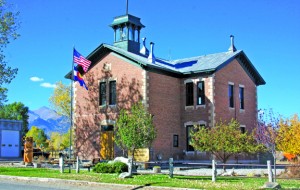By Hal Walter
The sobering test results indicating our well water contains high levels of lead and nitrates, as well as E. coli and coliform bacteria, raised more questions than answers.
While lead seemed the most alarming concern, nitrates were another puzzle. Generally nitrates are found in areas where high levels of chemical fertilizers are used in agriculture. They also can be present as a by-product of bacteria.
But the presence of bacteria itself was also a puzzle. Over the years we have tested for bacteria several times. All of the previous bacteria tests were negative.
I called the Colorado Department of Health laboratory and explained my bewilderment over these results, and asked if there might be the possibility of a mix-up with samples. The answer was that it was very unlikely. However, the lab offered to retest at no charge.
First came bacteria results. No E. coli this time, but coliform bacteria once again were present. Weeks later, came the new chemistry results. This time the lead was at below detectible levels, but the nitrate had actually increased considerably.
Now I was even more confused.
I studied geology while a journalism student at the University of Colorado and have always found the subject fascinating. One thing I like about geology is that rocks always seem to provide a logical explanation. The answers to my water quality questions surely were buried in the rock.
I sought out input from someone with some real expertise and was able to reach Ken Watts, groundwater specialist with the United States Geological Survey office in Pueblo. He recently presented a seminar on “The Basics of Water in Custer County” and was able to provide me with good information about how groundwater works in this area.
It’s always been a true mystery to me that when I turn on a faucet, water is issued from the granite below. Moreover, I’ve been surprised at times when I have forgotten to turn off the hose while filling a stock tank and the water just keeps on flowing. Even during the drought of 2002 the little hole in the ground still produced water from solid bedrock.
Water wells in this area of the Wet Mountains where I live are in what are known as “fractured rock aquifers,” according to Watts. These wells generally produce less than 10 gallons per minute and the quantity of water is unknown. Well-drillers find groundwater in this area by drilling into the bedrock, which contains cracks, or fractures, created over millions of years of geologic activity. Some cracks are dry and some contain water. When the bored hole crosses a saturated fracture line in the rock, this creates a well.
That’s simple enough. The problem is we don’t have a side view of exactly what’s underground and the fracture lines can be highly variable in terms of direction, dimension, angle and length.
This water originates as local rainfall or snowmelt that is absorbed into the ground and sinks until it finds a crack. While the general directional flow of groundwater tends toward the surface stream beds, the twisted nature of the geology underground does not necessarily mean all water takes a straight path, since not all underground fracture lines run in the same direction as the surface.
For example, let’s say there’s a 150-foot well that’s a good distance uphill from a leach field. There could be a fracture line running 35 feet below the leach field that cuts back into the hillside at an angle and crosses the well hole at a depth of 75 feet. Another possible scenario is that a fracture line undercuts a livestock corral and then runs across the well hole.
Either of these situations could potentially explain E. coli bacteria and nitrate in my well.
As for the lead, there are other explanations. There could simply be exposed ore contacting water in either the well hole or the actual fracture.
Or, the heavy metal could be sinking into the ground from a surface source.
Which brings us to the Terrible Mine. This summer an EPA emergency response cleanup project began at the small pit lead mine near my home. The ASARCO mining company is paying about $1.4 million for the cleanup.
My house is a couple miles from the 44-acre mine. However, since the county once used the mine’s tailings to surface some of the local roads, lead from this mine could be found just about anywhere in this area.
In fact, tests conducted by the Colorado Department of Public Health and Environment and released in 1998 revealed two main thoroughfares near my house, County Roads 271 and 265, have lead-carbonate concentrations ranging from 3,000 to 4,000 ppm. By comparison, the EPA’s action level for lead in soil in residential areas of the California Gulch Superfund site near Leadville was 3,500 ppm.
It’s certainly not out of the question that lead from the road base could wash off the roads in rainwater or snowmelt, infiltrate the ground, and find its way into the underground cracks that feed wells.
Incidentally, our first test sample that contained high levels of lead was taken after a period of heavy rains. The second test was taken during an extended dry period.
Lead in your drinking water is no joke. Problems due to heavy metal exposure can begin almost immediately after exposure to high amounts or can result from a buildup of smaller levels over many years. Children are most vulnerable, but low-level exposure throughout an adult’s lifetime can also lead to fatigue, immune problems and cognitive dysfunction.
The problem is there’s no way to know just when lead or other contaminants may be present in the well. Testing the water only gives a snapshot of what is flowing underground at that moment and you can’t test it every hour or everyday. Or even every month.
There’s an old adage: “The solution to pollution is dilution.” I continue to buy water treated by reverse osmosis, blend it with my well water, then run it through a Berkey water purification system. This seems like a sensible solution for now.
Hal Walter writes and edits from the Wet Mountains. You can keep up with him regularly at his blog: www.hardscrabbletimes.com

